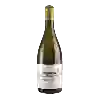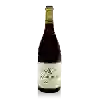
Winery Vincent SauvestreClos des Tessons Meursault
In the mouth this white wine is a powerful.
This wine generally goes well with rich fish (salmon, tuna etc), shellfish or mild and soft cheese.
Taste structure of the Clos des Tessons Meursault from the Winery Vincent Sauvestre
Light | Bold | |
Dry | Sweet | |
Soft | Acidic |
In the mouth the Clos des Tessons Meursault of Winery Vincent Sauvestre in the region of Burgundy is a powerful.
Food and wine pairings with Clos des Tessons Meursault
Pairings that work perfectly with Clos des Tessons Meursault
Original food and wine pairings with Clos des Tessons Meursault
The Clos des Tessons Meursault of Winery Vincent Sauvestre matches generally quite well with dishes of pasta, rich fish (salmon, tuna etc) or shellfish such as recipes of pasta with sausage, fresh salmon risotto or zarzuela mayonapo.
Details and technical informations about Winery Vincent Sauvestre's Clos des Tessons Meursault.
Discover the grape variety: Chardonnay
The white Chardonnay is a grape variety that originated in France (Burgundy). It produces a variety of grape specially used for wine making. It is rare to find this grape to eat on our tables. This variety of grape is characterized by small bunches, and small grapes. White Chardonnay can be found in many vineyards: South West, Burgundy, Jura, Languedoc & Roussillon, Cognac, Bordeaux, Beaujolais, Savoie & Bugey, Loire Valley, Champagne, Rhone Valley, Armagnac, Lorraine, Alsace, Provence & Corsica.
Last vintages of this wine
The best vintages of Clos des Tessons Meursault from Winery Vincent Sauvestre are 2012
Informations about the Winery Vincent Sauvestre
The Winery Vincent Sauvestre is one of of the world's greatest estates. It offers 47 wines for sale in the of Meursault to come and discover on site or to buy online.
The wine region of Meursault
The wine region of Meursault is located in the region of Côte de Beaune of Burgundy of France. Wineries and vineyards like the Domaine Coche-Dury or the Domaine d'Auvenay (Lalou Bize Leroy) produce mainly wines white and red. The most planted grape varieties in the region of Meursault are Chardonnay et Pinot noir, they are then used in wines in blends or as a single variety. On the nose of Meursault often reveals types of flavors of pineapple, banana or toasted almonds and sometimes also flavors of baked apple, elderflower or orange.
The wine region of Burgundy
Bourgogne is the catch-all regional appellation title of the Burgundy wine region in eastern France ("Bourgogne" is the French name for Burgundy). Burgundy has a Complex and comprehensive appellation system; counting Premier Cru and Grand Cru titles, the region has over 700 appellation titles for its wines. Thus, Burgundy wines often come from one Vineyard (or several separate vineyards) without an appellation title specific to the region, Village or even vineyard. A standard Burgundy wine may be made from grapes grown in one or more of Burgundy's 300 communes.
The word of the wine: Chaptalization
The addition of sugar at the time of fermentation of the must, an ancient practice, but theorized by Jean-Antoine Chaptal at the dawn of the 19th century. The sugar is transformed into alcohol and allows the natural degree of the wine to be raised in a weak or cold year, or - more questionably - when the winegrower has a harvest that is too large to obtain good maturity.














